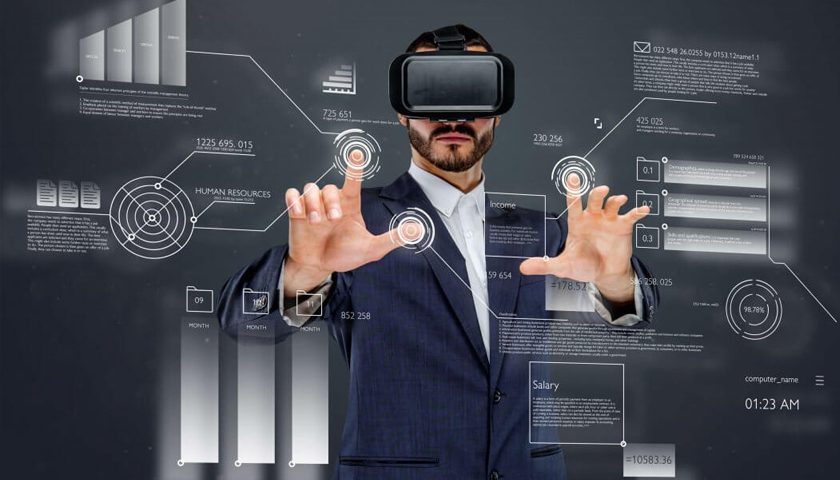Augmented Reality (AR) and Virtual Reality (VR) are two technologies that have gained immense popularity in recent years. These technologies have made it possible to create immersive digital experiences that can be used in various fields, including education, healthcare, entertainment, and retail.

AR and VR are different but related technologies. AR is a technology that overlays digital information onto the real world, whereas VR creates a completely artificial environment that users can interact with. In this article, we will explore the unique features of AR and VR and how they are used in different fields.
AR: Enhancing the Real World
AR technology has made it possible to augment the real world with digital information, creating a more interactive and engaging experience for users. This technology has been used in various fields, including education, healthcare, and retail.
AR Architecture
The architecture of AR consists of several key components, including:- Mobile device or smart glasses - The device or glasses that are used to view the real world and overlay digital information.
- Sensors - The sensors in the device or glasses that are used to track the user's movements and position.
- Processor - The processor in the device or glasses that is used to process the data from the sensors and overlay the digital information onto the real world.
- Display - The display in the device or glasses that is used to show the augmented view.
- Digital content - The digital content that is overlaid onto the real world, such as 3D models, animations, and text.
- AR software - The software that is used to create and manage the AR experience, including tracking the user's movements and position, processing data from the sensors, and overlaying digital content onto the real world.
In education, AR technology can be used to create interactive textbooks that allow students to interact with digital models and animations. This technology can also be used in museums to provide visitors with additional information about exhibits.
In healthcare, AR technology has been used to create medical simulations that allow medical students to practice surgical procedures in a safe environment. This technology can also be used to provide patients with information about their medical conditions and treatment options.
In retail, AR technology can be used to create interactive shopping experiences that allow customers to try on virtual clothing and accessories. This technology can also be used to provide customers with information about products and promotions.
VR: Immersive Digital Environments
VR technology creates a completely artificial environment that users can interact with. This technology has been used in various fields, including gaming, education, and healthcare.
VR Architecture :
The architecture of VR consists of several key components, including:
- Head-mounted display (HMD) - The device that is used to create a virtual environment for the user to interact with.
- Sensors - The sensors in the HMD that are used to track the user's head movements and position.
- Processor - The processor in the HMD that is used to process the data from the sensors and create the virtual environment.
- Audio - The audio system in the HMD that provides spatial audio to create a more immersive experience.
- Input devices - The devices that are used to interact with the virtual environment, such as controllers or hand tracking.
VR software - The software that is used to create and manage the VR experience, including creating the virtual environment, tracking the user's movements and position, and handling user input.
In gaming, VR technology provides a more immersive gaming experience by creating a virtual world that users can explore and interact with. This technology has also been used in theme parks to create virtual rides that provide visitors with a thrilling experience.
In education, VR technology can be used to create virtual field trips that allow students to explore different parts of the world. This technology can also be used to create simulations that allow students to practice skills in a safe environment.
In healthcare, VR technology has been used to create medical simulations that allow medical students to practice surgical procedures in a safe environment. This technology can also be used to provide patients with a distraction during medical procedures.
The Future of AR and VR :
AR and VR technology are constantly evolving, and their future looks bright. With the advancement of technology, we can expect to see more sophisticated AR and VR experiences that provide even more immersive and engaging experiences.
Conclusion:
In conclusion, the architecture of AR and VR consists of several key components, including the device or glasses, sensors, processor, display, digital content, and software. Each component plays a crucial role in creating an immersive and engaging AR or VR experience for the user. As technology continues to advance, we can expect to see even more sophisticated AR and VR architectures that provide even more immersive and engaging experiences.


Augmented Reality (AR) services have revolutionized the way we interact with technology. The ability to overlay digital content onto the real world opens up endless possibilities for enhancing learning, entertainment, and even everyday tasks. From virtual try-ons in the fashion industry to interactive museum exhibits, AR services have become a game-changer for businesses and consumers alike. As technology continues to advance, we can expect to see even more innovative applications of AR in various industries. With the potential to enhance our reality and make tasks more efficient, AR services are an exciting development that will undoubtedly continue to shape our future.
ReplyDelete